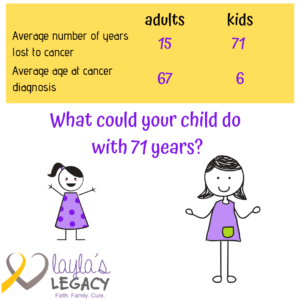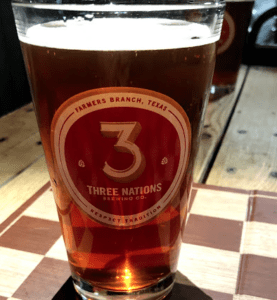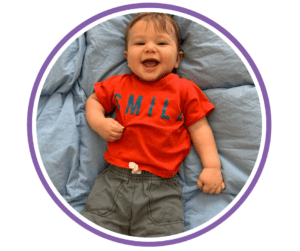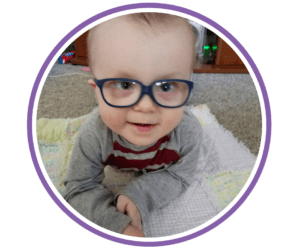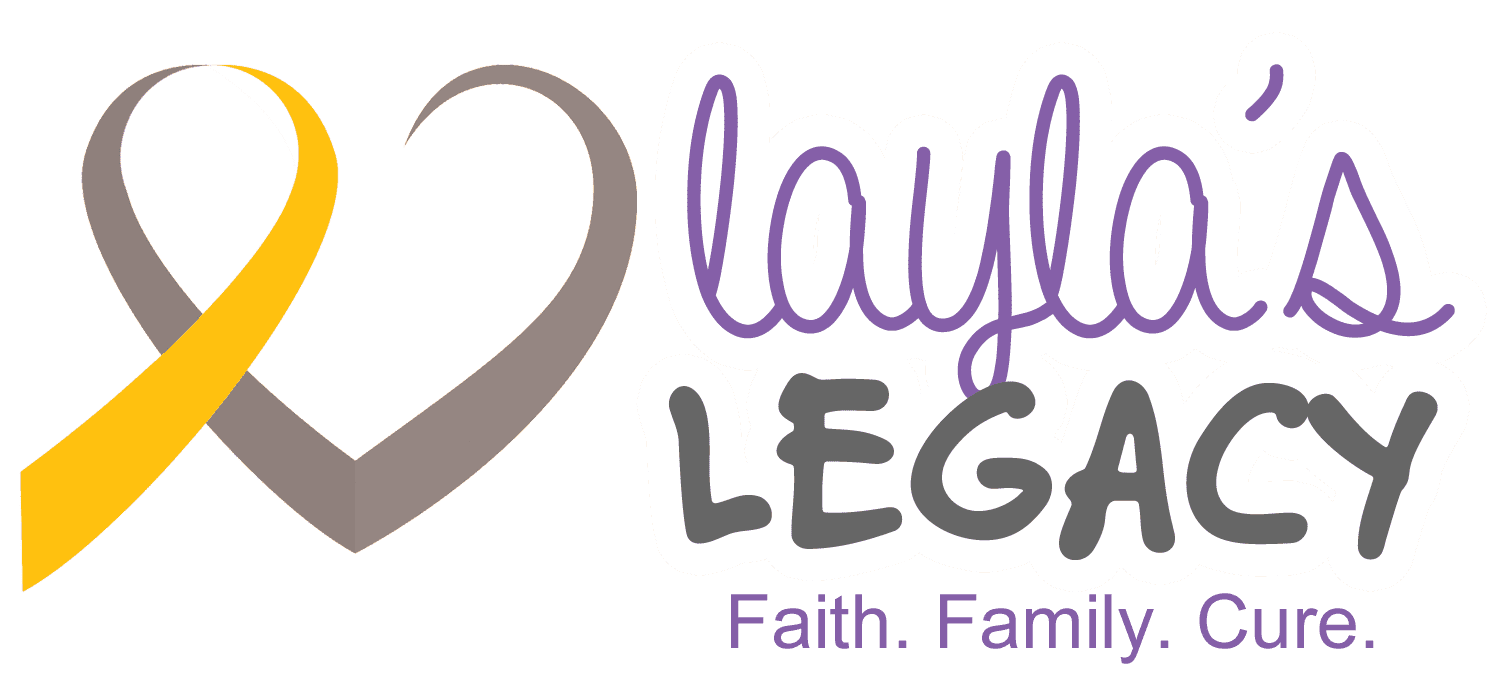
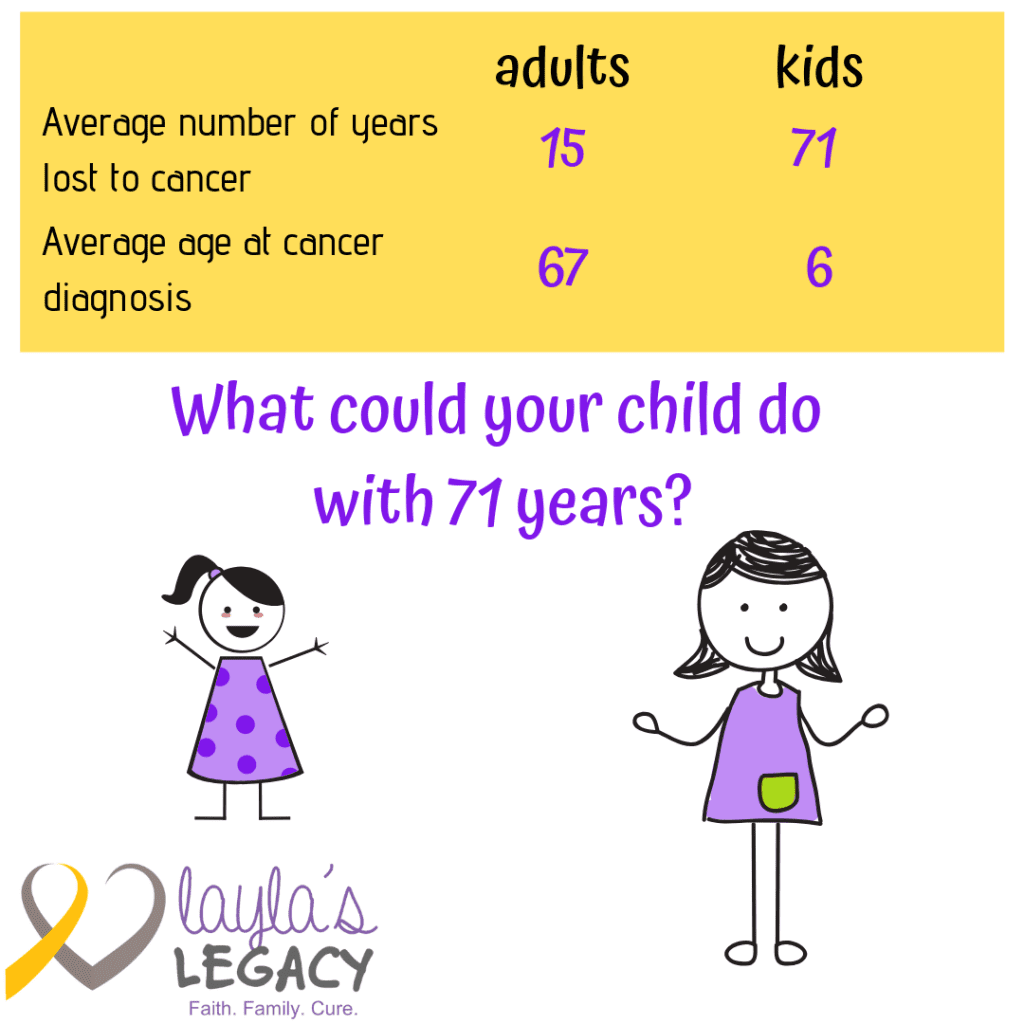
During the State of the Union address on February 5, 2019, President Trump announced that $500 million dollars over the next 10 years will be allocated to childhood cancer research. Cue the applause. Seriously, though, that’s not sarcasm. I am over the moon that the president mentioned those words on the platform that he did. It’s about dang time.
Still, the childhood cancer community is not all on the same page and dancing in the streets and there are plenty of reasons why. There is the one side that says “Hey, progress is progress! We have to start somewhere.” And then the other side that says “It’s not enough!” The truth is, neither side is wrong. It IS progress and every movement starts with a step in the right direction. When you do the math, though, it still feels small for those of us who pour so much of our lives into this cause.
The numbers
The National Institutes of Health is projected to spend $462 million in 2019 on childhood cancer research, compared to $433 million in 2017 and $486 million in 2018. An addition of $50 million a year would mean roughly a 10 percent increase. This is a big deal to scientists who have had a hard time getting funded in the past. You see, grants are awarded on a priority scale, and since technically, childhood cancer has a higher cure rate, it doesn’t get the same priority as some adult cancers.
Cure rates are deceiving
“But wait,” you say. “Aren’t we fighting for funding because kids are dying? I thought you just said childhood cancer has a high cure rate?” Ah, there’s the rub. You see, there have been tremendous advancements in the treating childhood leukemia, but cure rates for other pediatric cancers, like brain cancer, have remained unchanged.
What makes brain cancer different
Our brains are protected by a protective layer called the blood-brain barrier. It prevents viruses and toxins in the bloodstream from harming the brain, but it also makes it difficult for most chemotherapies to have an effect on the cancer cells they need to destroy. This is why radiation has been seen as the most effective form of treatment for brain tumors, but with it come extensive and long-term side effects. For a child with a still-developing brain, this is particularly devastating. Cognitive impairment, loss of motor skills and loss of speech are only a few side effects that children will face with today’s traditional brain cancer treatments.
Kids and adults are different
It goes without saying that kids and adults are different, even down to the genetic makeup of their cancers. In a study published by St. Jude last year, it was reported that about half the driver mutations in childhood cancers – those things responsible for the rapid growth of cancer – aren’t seen in adults. This is why the idea that we can use adult treatments for kids is false. Pediatric cancers have to be studied independently and THAT’S WHY WE NEED THE FUNDING.
Thank you, President Trump, for taking a step forward and continuing the effort starting with the Obama administration and Cancer Moonshot. Progress should always be applauded or else it will not continue. I know our foundation and others like us will keep working towards more because losing one child is one too many.
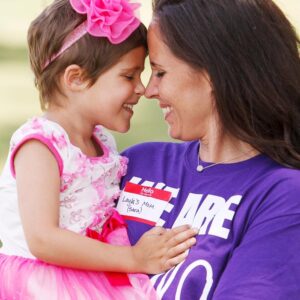
Sara Stamp
Layla’s Legacy Foundation is a 501(c)(3) organization funding innovative pediatric brain cancer research while bringing hope and help to families impacted by the disease.
